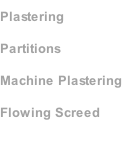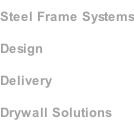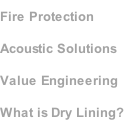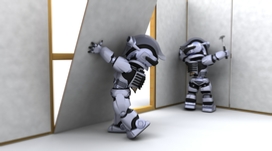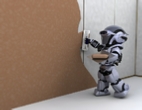What is Dry lining? – Here we offer you an insight into dry lining and the varying methods and descriptions of what dry lining is and what dry lining consists of:
An introduction to what is Dry lining:
Dry lining is technically the covering of a background surface with a plaster substitute; Masonry, block work and generally brickwork are unacceptable as a finish not only for aesthetic reasons but also because they generally are not as true as a plastered finish. Dry lining is the fitting of plasterboard or a board material akin to plasterboard to any surface in lieu of a hard plaster. Dry lining doesn’t require anywhere near the amount of water that traditional plastering needs and to some degree less technical expertise to fit than plaster. Plasterboards are produced by leading manufacturers in huge factories and in great volume. Plasterboard is available in various lengths, widths and thicknesses.
Insulation can be glued to the back of plasterboard lifting the thermal properties accordingly. An integral vapour layer can also be fitted to the plasterboard with or without insulation. When dry lining to metal or timber studs, insulation can be fitted in the cavity created between the studs.
The background to which the plasterboard is fixed can be masonry, timber or metal, each requiring a different fixing method.
What is Dry lining?– timber or metal stud:
When dry lining and fixing plasterboard to timber or metal this is referred to as ‘tacking’ if using nails, or ‘screwing’ when screw fixings are used. Screws will always support the plasterboard better than clout nails and we recommend whenever possible to follow this recommendation. Dry lining to timber or metal is reasonably straightforward providing you follow a few basic principles.
Always choose the most suitable plasterboard or board for the job in hand. If you’re dry lining a wet area, maybe a bathroom consider the extra value moisture resistant plasterboard will give you. Moisture resistant plasterboard is normally green for recognition purposes. The paper skin that encases the plaster within the plasterboard is treated with wax, making moisture penetration unlikely under normal conditions. Moisture resistant plasterboard however will not stand being submersed in water for long periods and the core is like any other board making unbound or cut edges susceptible to water penetration. Lafarge produce an aqua board and Knauf an ‘Aquapanel’ plasterboard, both of which are extremely water resistant. The Lafarge aqua board can even be used in external lining applications.
What is Dry lining? – getting the right plasterboard:
Plasterboard is produced with a plaster core for natural sound and fire properties and some types have increased core density and fibres added for extra strength.


